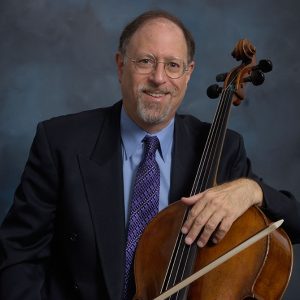
100 Cello Warm-Ups and Exercises Blog 15: Cello Geography Part 1: Neck Positions
Robert Jesselson
 Learning to play a string instrument means having to figure out where the left hand goes on the fingerboard in order to play the notes. Since we don’t have a GPS system for the cello, most people initially learn where the notes are by knowing the positions. The positions are like the latitude and longitude of the cello, and knowing them can help organize the grid of the fingerboard. Unfortunately many students learn just First and Fourth positions, because then they can play almost all the notes in the lower part of the cello. However, that limits the myriad choices of fingerings that can produce different shifts, slides, string crossings, etc. It reduces the creative possibilities, and it can make it almost impossible to play difficult passages that require the intermediate positions.
Learning to play a string instrument means having to figure out where the left hand goes on the fingerboard in order to play the notes. Since we don’t have a GPS system for the cello, most people initially learn where the notes are by knowing the positions. The positions are like the latitude and longitude of the cello, and knowing them can help organize the grid of the fingerboard. Unfortunately many students learn just First and Fourth positions, because then they can play almost all the notes in the lower part of the cello. However, that limits the myriad choices of fingerings that can produce different shifts, slides, string crossings, etc. It reduces the creative possibilities, and it can make it almost impossible to play difficult passages that require the intermediate positions.
As students advance they often forget that the way they initially learned about the fingerboard was through the positions. Sophisticated cellists use their well-developed aural skills, including pitch memory and intervals, as well as their kinesthetic memory. However, I feel that even for advanced cellists it is always useful to go “back to the basics” and revisit our fundamental knowledge of the positions. It is an important piece of information about the cello that should be a resource for improving intonation, relaxation, and discovering new fingering possibilities for various passages in the repertoire. It is especially important for teachers to remind themselves of the positions so that they can teach it properly to the young student.
We generally divide the cello into Neck Position and Thumb Position (though in advanced playing the thumb could be used anywhere on the cello). It is really important to have a good system for identifying the positions in Neck Position. There are several good systems around, but the one I prefer in my teaching – and the one that I use in these videos is the following:
Every position has a normal and an extended variant. Knowing these positions refines our understanding of the cello geography.
I use what I call “block” positions as the initial way to treat the left hand. Block Position means that the fingers are basically perpendicular to the string, and the fingers are all relaxed but down on the string. This square shape of the hand is especially important for double stops, chords, string crossings, and fast playing. It also is a good way to stabilize intonation for the neck positions.
After the block position concept has been absorbed by the student I begin to address the other way that we use the left hand: balancing on the finger that is playing. This way of playing is preferable for expressive vibrato and for releasing more tension. In this position the arm weight is centered on the finger that is playing. This is especially important for melodic playing on one string.
For each position the elbow is in a slightly different place – it moves forward as you change positions. This becomes really important when we focus on shifting, since the elbow really is what moves first. Even in small ½ step shifts, the elbow moves first and the hand and fingers follow. And even in the extended variants of each position the elbow moves slightly forward. (Next week’s blog will discuss the extended positions).
With my students I make sure that they are very clear about the geography of the Neck Positions before moving on to Thumb Position. Even though most of my students have already played in Thumb Position – and most of them have worked on difficult pieces involving the thumb – if they don’t have a good understanding of the “cello lowlands” then we review that before visiting the “highlands” of Thumb Position. Many people have a special problem with the “Bermuda triangle” of V, V 1/2, VI, and VI 1/2 positions – and especially the extensions in those positions.
In next week’s blog I will discuss extended position and give some exercises for training and re-training this important part of our technique.
Subjects: Practicing, Technique
